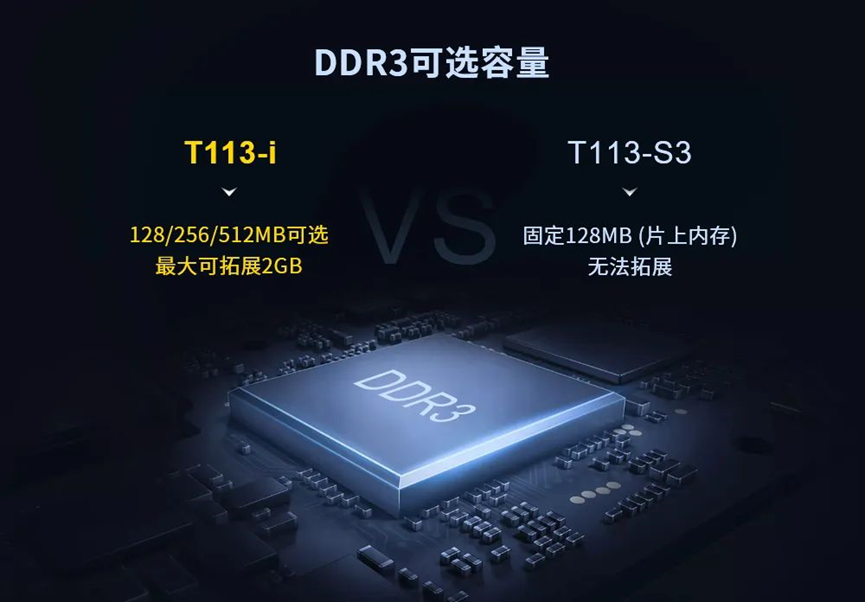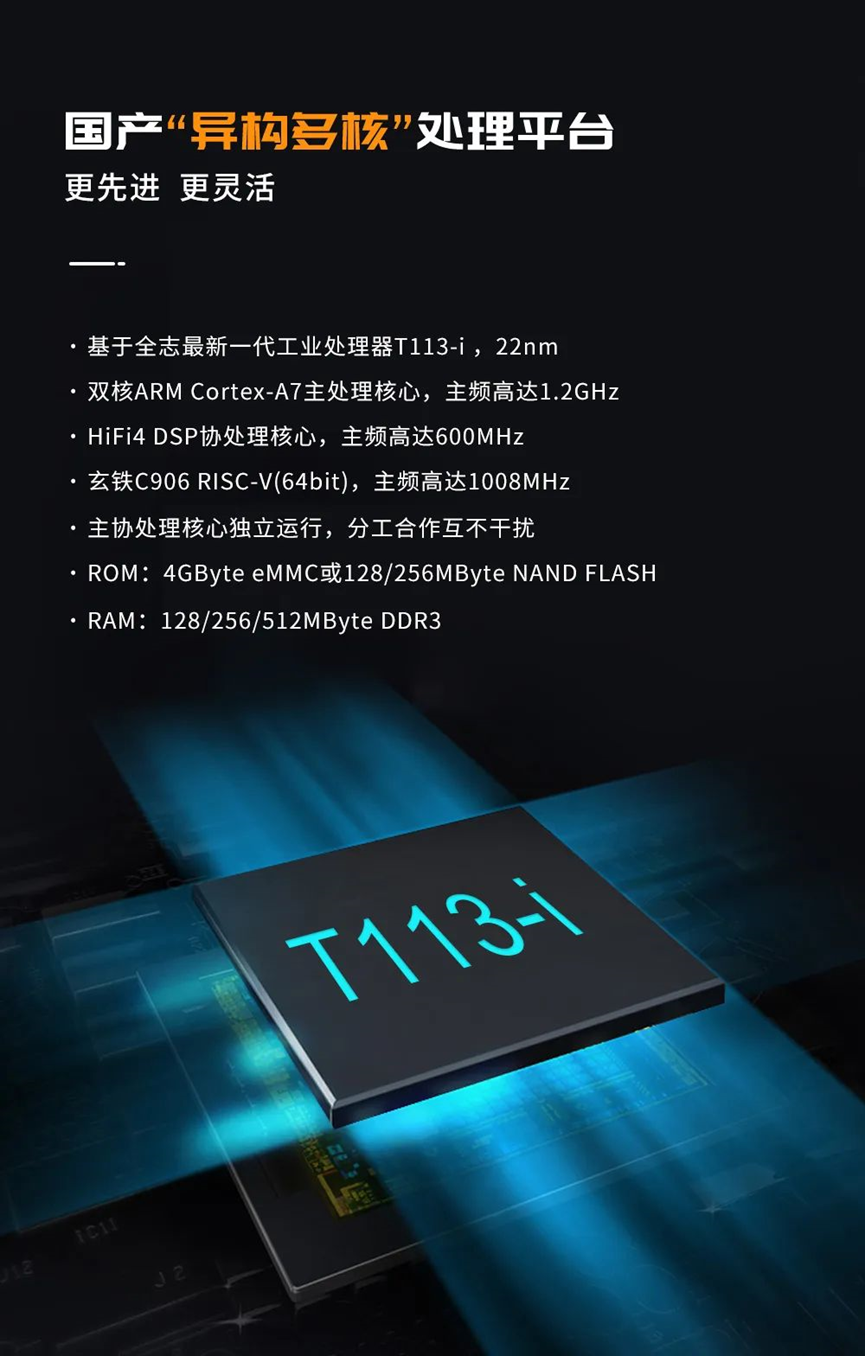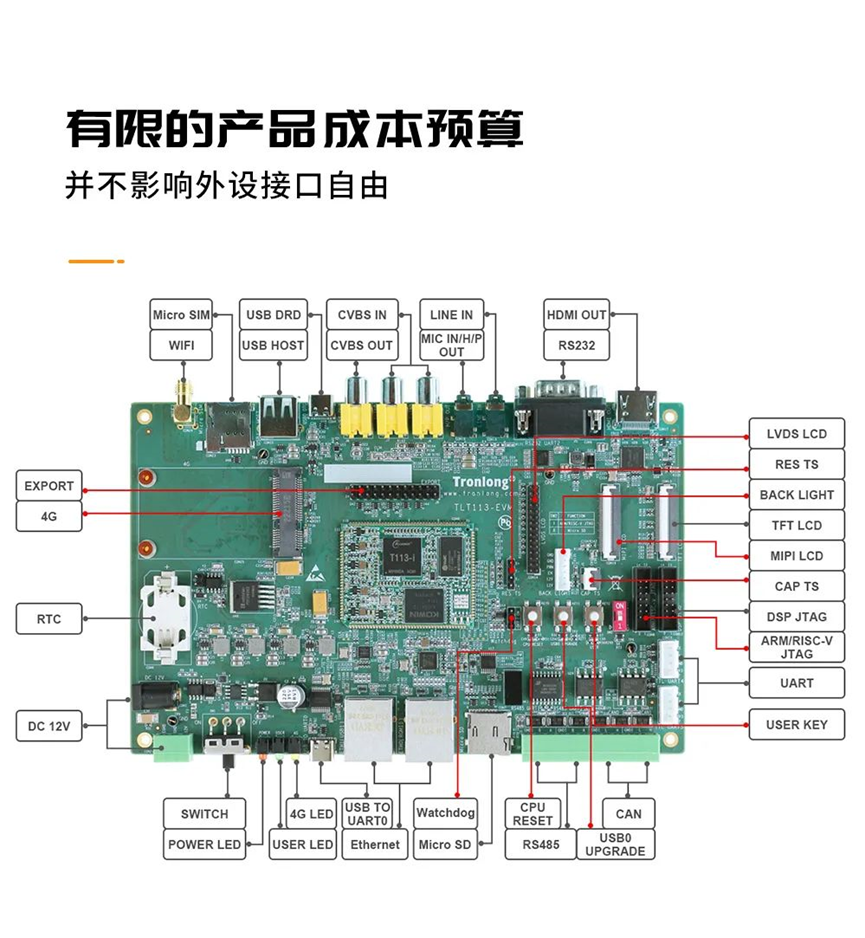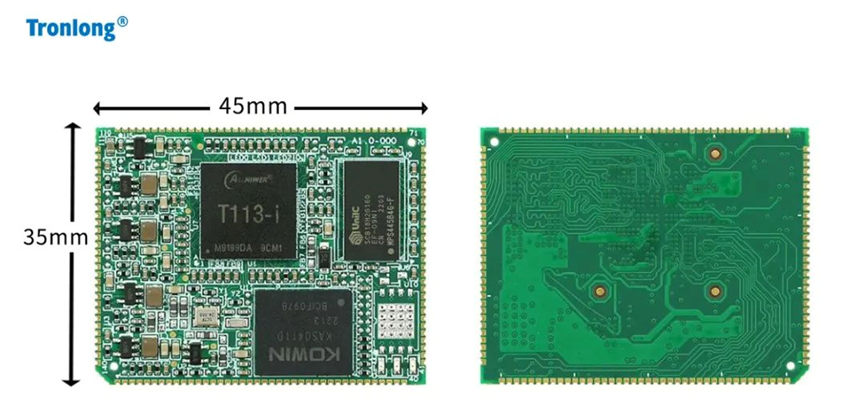Since 9 months ago, Chuanglong Technology launched the Allwinner T113-i dual-core ARM [email protected] industrial core board (SOM-TLT113), which was "79 yuan per chip including tax", and many embedded software and hardware Engineers and users have asked us, what is the difference between the two processors T113-i and T113-S3? Which processor with different suffix models is more suitable for industrial scenarios?
Today, Chuanglong Technology will reveal the secrets in depth for everyone, and explain in detail the differences between the Allwinner domestic processor T113-i and T113-S3!
" True " industrial grade, wider application fields
Difference 1 : working temperature standard
Allwinner’s official information shows that the T113-i can still operate stably at the true industrial temperature (-40°C ~ +85°C) without adding a heat sink, which greatly guarantees the high reliability of industrial products . Require.
However, T113-S3 has a small operating temperature range (-25°C ~ +75°C) without a heat sink, so it is not really industrial grade. Even with the addition of a heat sink, the T113-S3 operating temperature range (-25°C ~ +85°C) still cannot reach the true industrial temperature . Adding heat sinks not only increases the overall cost of the product, but also limits the product form to a certain extent, and at the same time adds hidden dangers to the long-term stable operation of the product.
If your application scenario is an industrial-grade standard or has strict temperature control requirements, or is currently a commercial-grade standard but some models are industrial-grade standards, and is a unified platform for easy management, then the T113-i platform is your first choice.

Figure 1 Comparison of operating temperature between T113-i and T113-S3

Figure 2 T113-i official manual data

Figure 3 T113-S3 official manual data
Support large-capacity DDR , no worry about performance upgrade
Difference 2 : DDR3 optional capacity
T113-i supports various industrial-grade capacities of 128/256/512MByte DDR3, with a maximum support of 2GByte. The performance improvement and cost control are more flexible, which can meet the diverse needs of users. The T113-S3 is fixed at 128MByte on-chip memory, does not support expansion, and the flexibility is greatly weakened.
If your application scenarios include low-end models (128MByte DDR3) and mid-to-high-end models (256/512MByte DDR3), the T113-i platform is your first choice for a unified platform and easy management.

Figure 4 T113-i and T113-S3 DDR3 optional capacity comparison
Built-in RISC-V slave core, more advanced product architecture
Difference 3 : The processor architecture
T113-i has a built-in high-performance, high-real-time RISC-V slave core, while the T113-S3 does not. T113-i is a dual-core Cortex-A7 ARM + HiFi4 DSP + C906 RISC-V heterogeneous multi-core processor. Among them, the RISC-V core frequency is as high as 1008MHz, and industrial real-time applications can be deployed on this core, greatly improving the performance of industrial products.
If your application scenarios include non-real-time applications (without RISC-V slave cores) and real-time applications (with RISC-V slave cores required), the T113-i platform is your first choice for a unified platform and easy management.

Figure 5 Comparison of T113-i and T113-S3 processor architectures







T113-i industrial core board